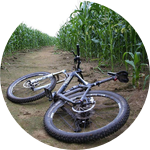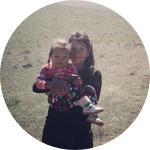About This Project
We are focusing on large-scale circulation patterns and their footprints in natural archives. Mongolia is a semi-arid, landlocked country between the Westerlies and Asian Summer Monsoon, already suffering from climate change. To improve the understanding of environmental changes, we investigate past climate and environmental conditions. This year’s goal is to produce high-resolution aerial photography and seismic surveys to map geomorphological footprints indicating past hydrological changes.
Ask the Scientists
Join The DiscussionWhat is the context of this research?
Mongolia depends on moisture supply from the west (Westerlies) and the south (Asian Summer Monsoon). It's a sensitive region to detect past variations and interactions of both systems. So far, those variations and interactions are controversially discussed. To contribute to this controversy, we aim to reconstruct past hydrological changes using lake sediments (applying i.a. innovative analytical techniques, such as compound-specific dD and d18O analyses, mapping lake level fluctuations (digital terrain models, seismic profiling) and investigating past glacier variations (geomorphological mapping and surface exposure dating with cosmogenic nuclides.
What is the significance of this project?
Mongolia is affected by climate change. Extreme events, such as droughts, heavy rainfall, dzuds (extreme winters with high lifestock mortality) have become more frequent and severe during the last few decades and are threatening the nomadic way of life. Little is known about past changes in climate and the environment, and how those changes affected human history. A particularly interesting controversy deals with reasons and preconditions for the expansion of the Mongolian Empire under Dschingis Khan.
What are the goals of the project?
To reconstruct lake level fluctuations (past climate and environmental conditions) we will use high resolution digital terrain models to identify lake level highstands (terraces), and seismic profiling to identify subaqueous terraces (lake level lowstands) at Lake Telmen (central Mongolia) and Khar Nuur (Mongolian Altai). This will perfectly complement our previous lake sediment results covering the last 4000 years.
Further, we aim to map the extent of former glaciations at two sites in Mongolia using UAVs (unmanned aerial vehicles). Khar Nuur, for example, is dammed by a moraine of unknown age, which we will sample for surface exposure dating to reconstruct glacial dynamics and the influencing climate conditions.
Budget
We are a group of four PhD students without project related funding. So far, we managed our field studies at student excursions (they call it expedition). We need a last field trip to complete our dataset because conditions last year were really bad – we saw a green Gobi Desert :). To finish our PhDs, we need another four-week field trip to:
- Complete our seismic survey (Altai)
- Map catchments and create high resolution DGMs, using UAVs
- Map and sample nearby moraines for surface exposure dating
We request money to pay our "local guide" and translator as well as for 2 rental cars and fuel.
Endorsed by
 Project Timeline
Project Timeline
We want to carry out the proposed fieltrip in June and July this summer.
Mar 05, 2019
Project Launched
Jun 23, 2019
Going back where we belong (Flight to Mongolia)
Jun 24, 2019
Organizing the trip, food, insurance, etc.
Jun 25, 2019
Driving to the western point of Mongolia (don't let you divert from the beautiful landscape, stop the car, otherwise you are in China
Jun 29, 2019
Mapping the lakes catchment from above using UAVs
Meet the Team
Affiliates
Affiliates
Affiliates
Team Bio
Call us the DREAM team. We are a raggle-taggled group of four PhD students with different scientific backgrounds and interests. May I present you Patricia, our one and only girl doing cosmogenic nuclide dating. Our sunny boy Paul who is looking deep with sonar and seismic. Marcel and Julian are interested in using biomarkers for paleo-research. Marcel is Haribo addicted and Julian hopefully learns to fly our UAV till the trip.
Julian Struck
I'm currently pursuing a PhD with Prof. Dr. Roland Zech at the Friedrich-Schiller-University Jena (Germany), investigating past moisture conditions using compound-specific stable isotopes. For a better proxy understanding I'm calibrating the isotopic signals of leaf wax n-alkanes (δD, δ13C) and hemicellulose sugars (δ18O) under recent climate conditions along a north-south and an east-west transect in semi-arid/arid Mongolia.
I already organized two fieldtrips to Mongolia and would describe myself as a curious modern adventurer. I'm interested in what is below the surface and in the hidden secrets of earth. In 1911, I probably would have accompanied Amundson to the geographic South Pole :)
I'm also working on Pleistocene fluvial terraces in the Mosel Valley (Trier, Germany) using isochron burial dating.
ResearchGate: https://www.researchgate.net/p...
Patricia Rauh
Hey, my name is Patricia and I´m a PhD student in Physical Geography at the University of Jena. I`m currently working with cosmogenic nuclides (10Be,26Al) for surface exposure dating to reconstruct the glacial history due to past climatic changes of some regions in Mongolia. Since my first trip to Mongolia, I`m hooked on this beautiful country.
Since I was a little girl (and I was a sort of a whirlwind :P), I am fascinated in nature's mechanisms, climatic effects (especially extreme events) and love to be outside. With the connection to Mongolia, I can combine both and can make my love to profession.
Marcel Bliedtner
Hi, I am a Phd student in climate science at the Institute of Geography and Oeschger Centre for Climate Change Research at the University of Bern. I am using biomarkers and their isotopic signatures to reconstruct past environmental conditions from sediment archives, most recently I am working with lake sediments. Moreover, I am interested in the origin and pathways of biomarkers before their final deposition in sedimentary archives, and track them by their radiocarbon signature. So far, I worked in different kinds of sedimentary archives at the margins of Arid central Asia, namely in the Caucasus region, southern Siberia and Mongolia.
But especially the Mongolian Steppe fascinated me a lot because of its rugged and wild landscape and its people that live off the land and their herds. I already did two fieldtrips to Mongolia, where I organized one of those. With my research, I aim to gain knowledge about the countries environmental past and how the Mongolian people can adapt to future climate changes. Nevertheless, I also want to feel the fresh westerly winds into my hair again.
Lab Notes
Nothing posted yet.
Project Backers
- 12Backers
- 7%Funded
- $401Total Donations
- $33.42Average Donation





